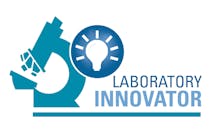Doctors with disabilities are rapidly changing stigmas, peer-to-peer learning, and outcomes for patients, yet remain underrepresented in the medical profession. Up to 10 percent of the U.S. population aged 18-24 has some type of disability, whereas only 2.7 percent of U.S. medical students have disclosed a disability. In a new article published in Academic Medicine, an expert task force convened by the Association of Academic Physiatrists (AAP) recommends legal, cultural, and technological advances to facilitate the inclusion of students with disabilities.
While medical students must meet academic standards for admission, they must also meet nonacademic requirements (called Technical Standards or TS) such as observation, communication, motor function and more. TS guidelines were first issued by the Association of American Medical Colleges (AAMC) in 1979, and, while they vary considerably by school, they remain the primary reference for medical school policies. These outdated TS can serve as a barrier to entry to the medical profession, causing bias and discrimination in the admissions process, lack of access to or knowledge of reasonable accommodations, and misconceptions about the ability of people with disabilities to function as physicians.
The task force proposes new language for the five TS categories and/or updating the content of each category to promote a functional approach. In addition, they advocate that medical schools monitor admission and retention of students with disabilities, ensure the accessibility of their TS to applicants and the public, clearly define procedures and decisions for accommodations, implement the principles of universal design in education, and other recommendations.
People with disabilities bring unique perspectives to medicine and help create a diverse workforce made up of culturally-competent practitioners that benefits their patients and their peers. Twenty-first century medicine must place a greater emphasis on competency-based skills that allow students to demonstrate their mastery of skills through alternative methods.
Visit Newswise for the article
https://www.newswise.com/articles/removing-barriers-for-aspiring-doctors-with-disabilities




